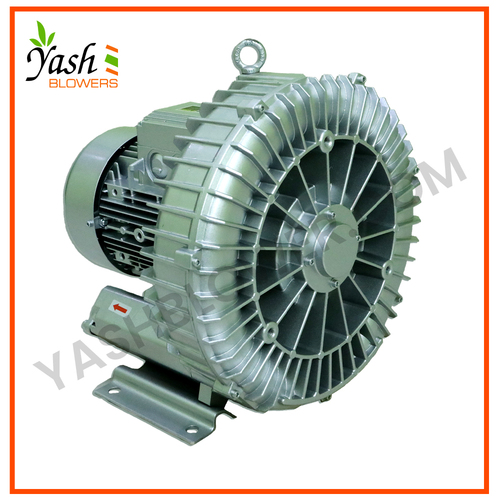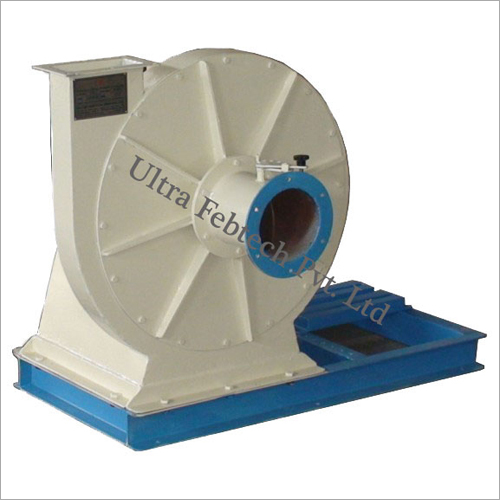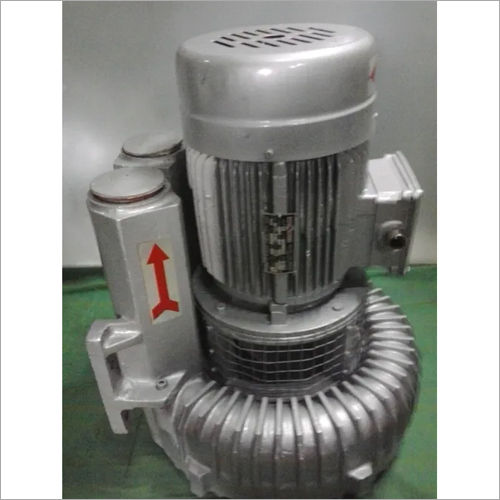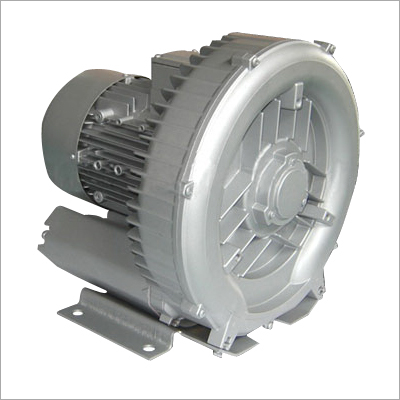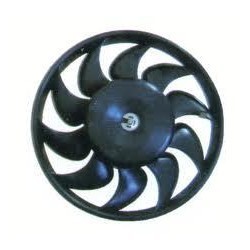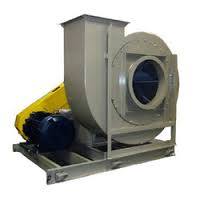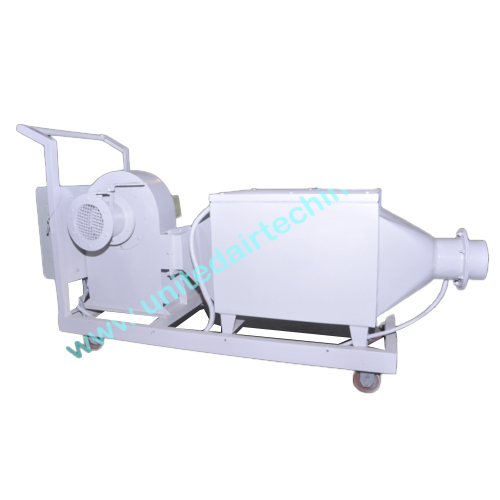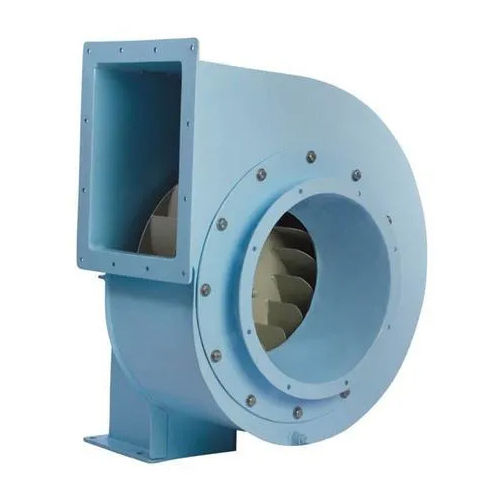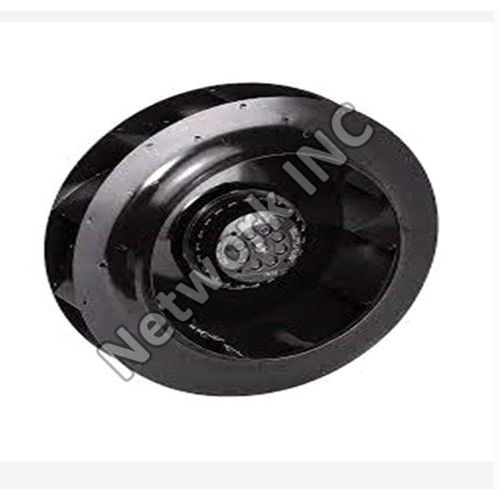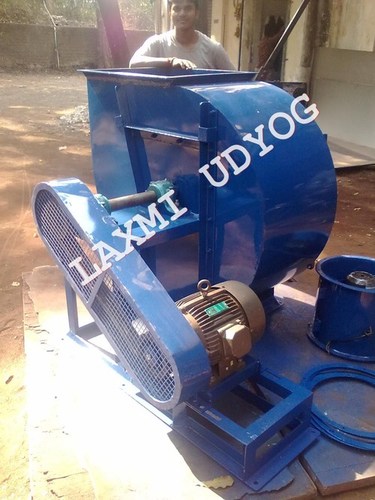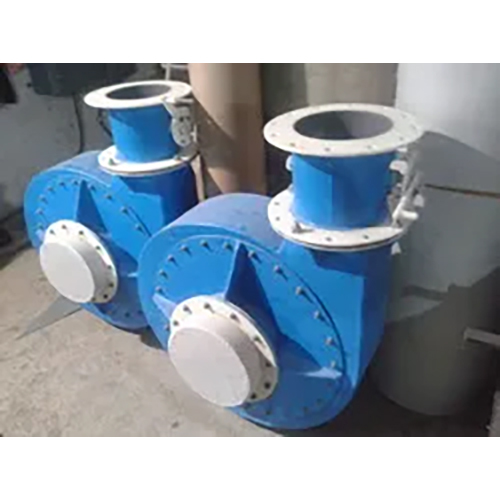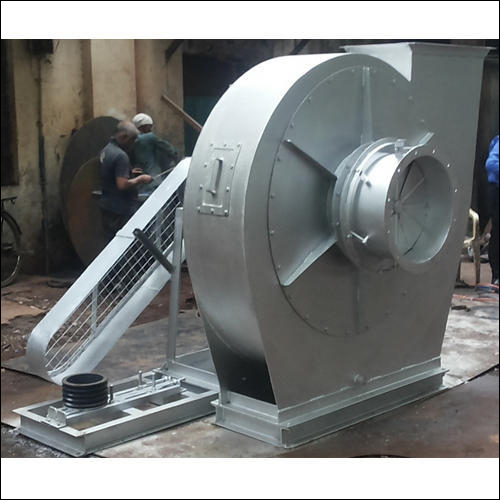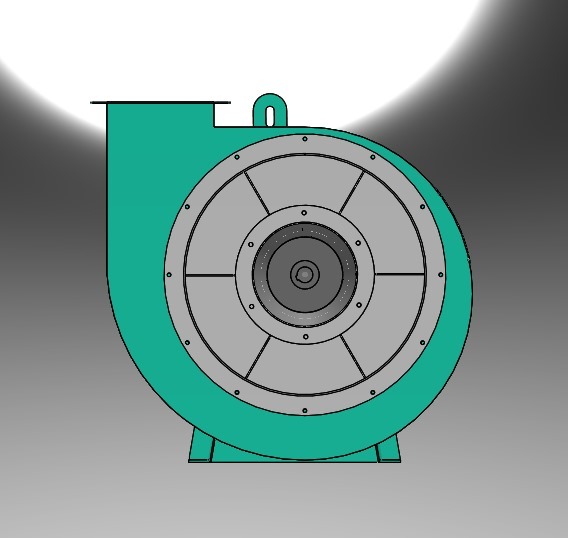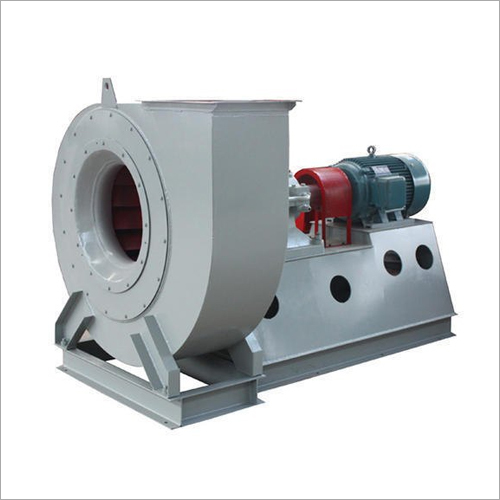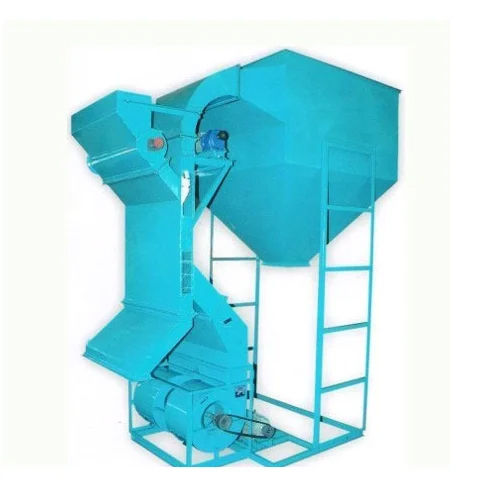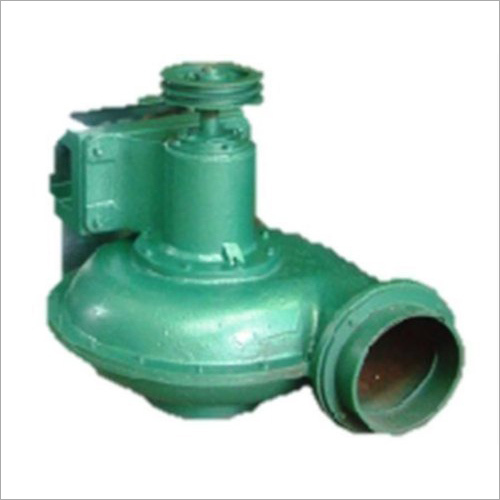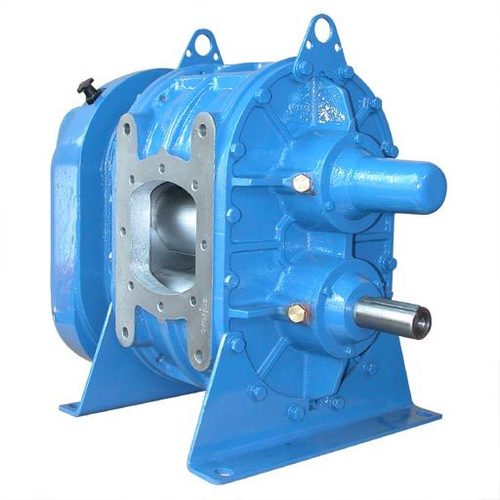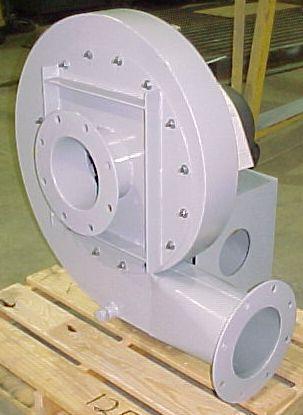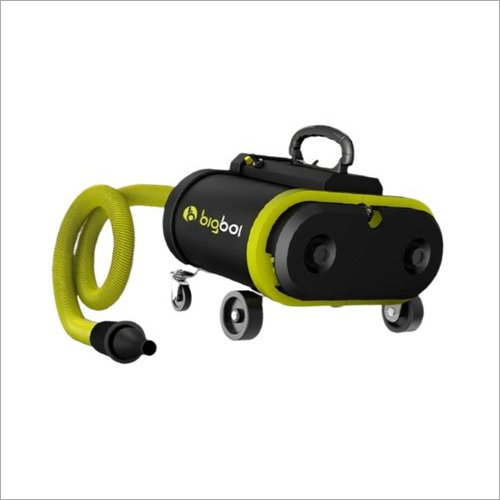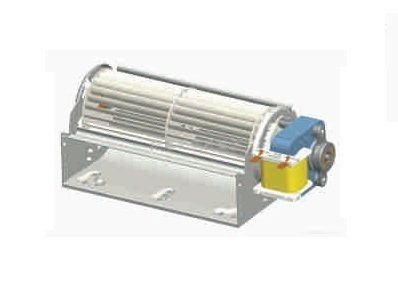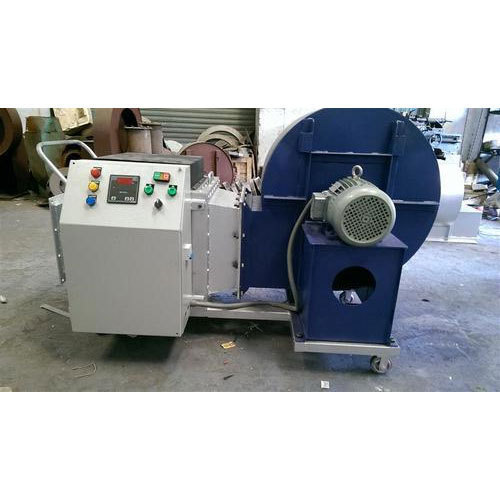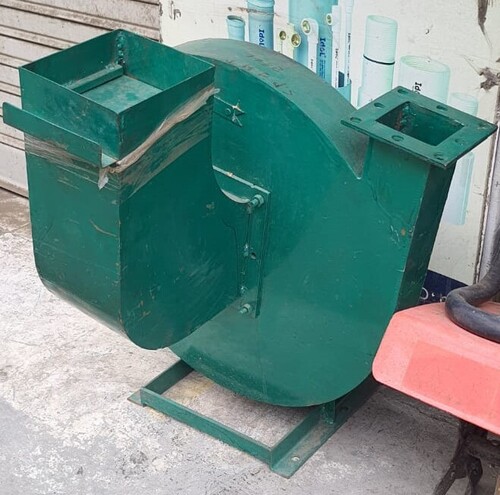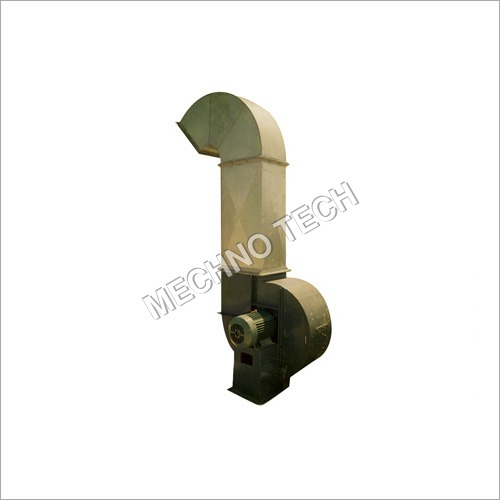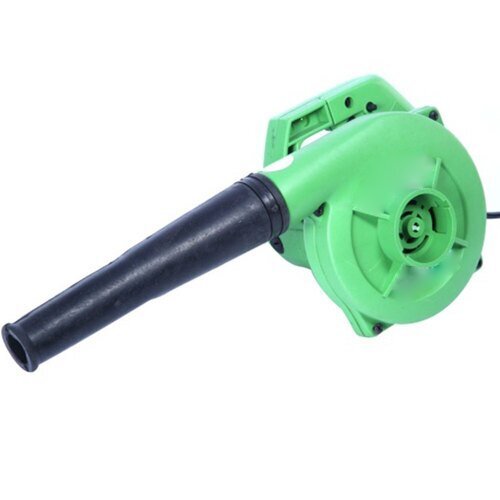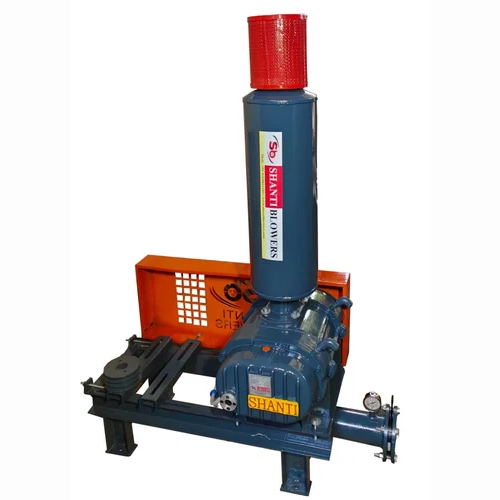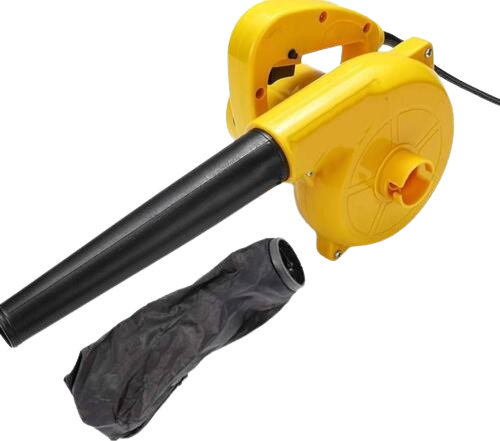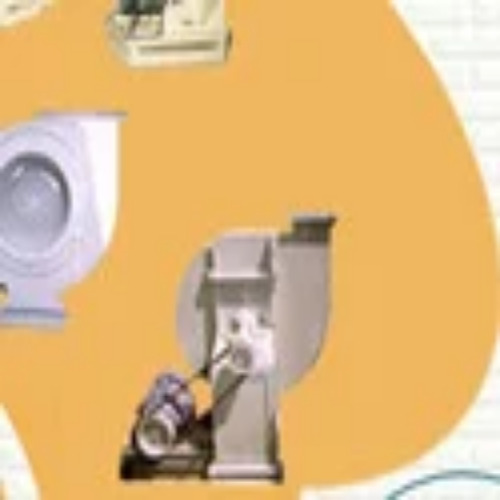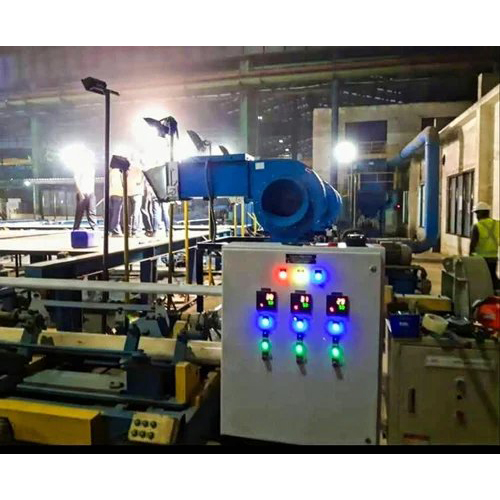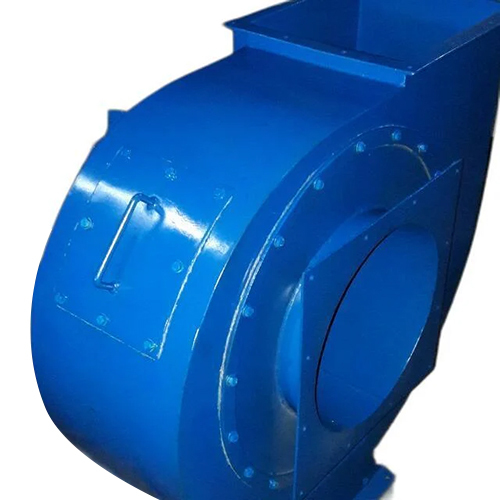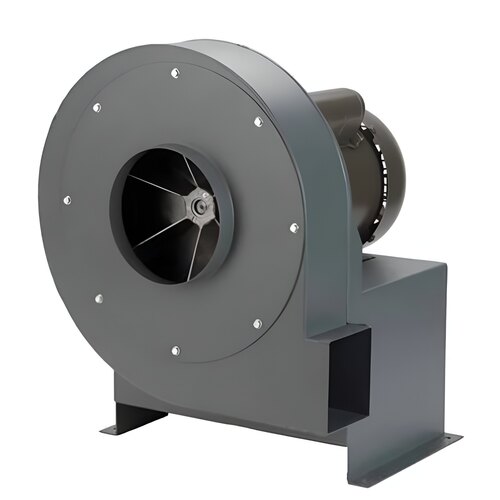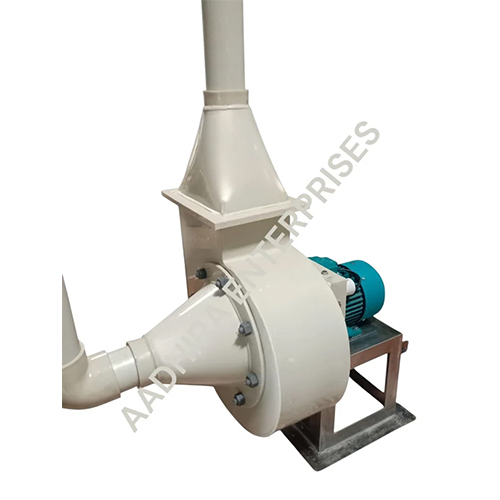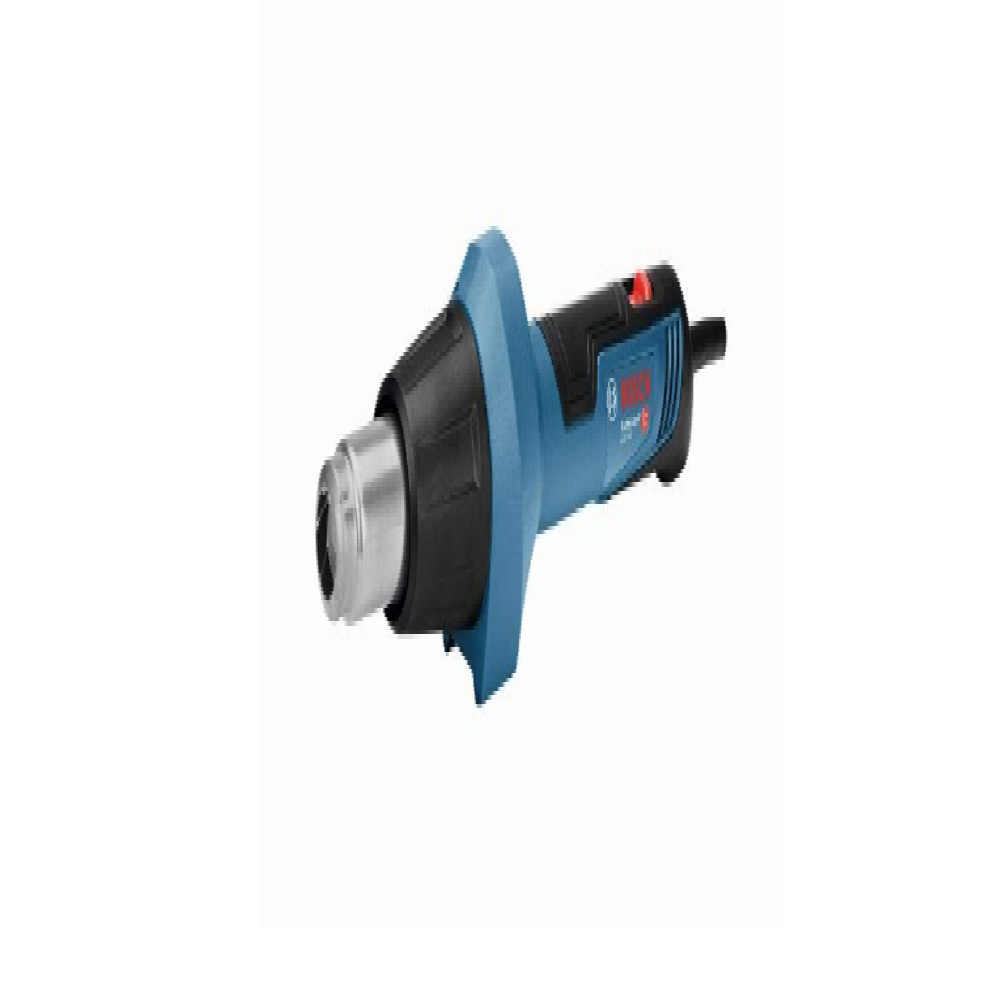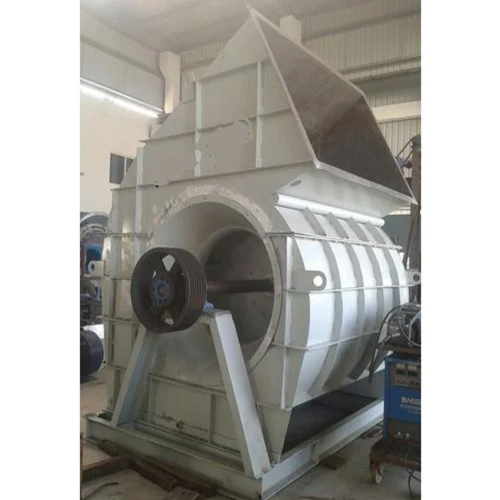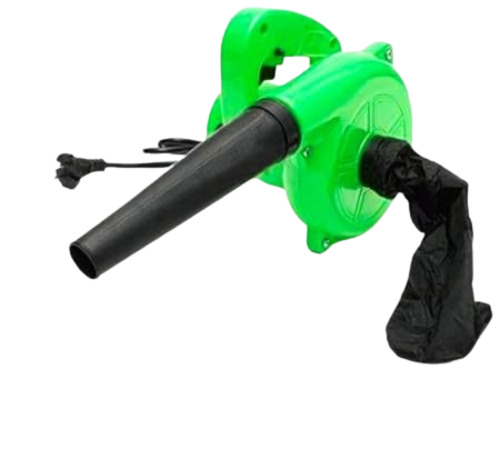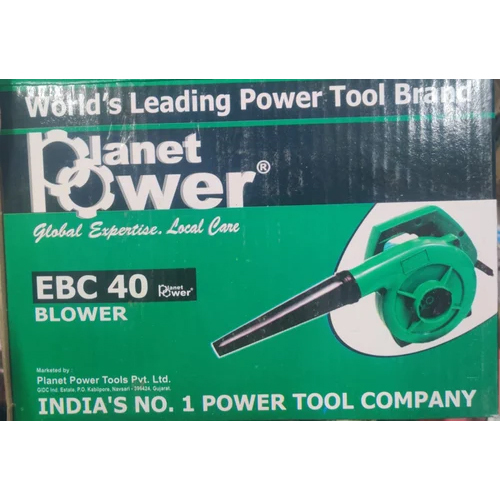Air Blowers
(3880 products)Aquaponics Air Blower - Electric Aluminum, Standard Size, Gray | High Pressure, Durable, Corrosion Resistant, Ideal for Aeration and Cooling Applications
12500.00 INR (Approx.)/Piece
MOQ1 Piece/Pieces
SizeStandard
UsageIndustrial
ColorGray
MaterialAluminum
PowerElectric
PressureHigh Pressure
Industrial Centrifugal Blower - High-Quality Materials & Manual Operation | Efficient Air Conveyance for Industrial Processes, Quality Tested
Price: 100000 INR/Unit
MOQ1 Unit/Units
Product TypeCentrifugal Blower
Materialother
Power SourceManual Blower
Grey Industrial Vacuum Blower
Price Trend: 14000.00 - 17000.00 INR/Piece
MOQ1 Piece/Pieces
Product TypeOthers, Industrial Vaccum Blower
Materialaluminium
ApplicationIndustrial
ColorGrey
Re Blowers India Private Limited
Mumbai
Electric Air Blower - Lightweight Plastic Design | High Efficiency, Quiet Operation, Ergonomic Handle, Versatile Performance
Price: 20000 INR/Piece
MOQ1 Piece/Pieces
Payment TermsOthers, Telegraphic Transfer (T/T), Cheque
Supply Ability1 Per Week
Delivery Time1 Week
Durable Industrial Blower
Product DescriptionWe are the loyalist in manufacturing and supplying an extensive assortment of Durable Industrial Blower in Indore, Madhya Pradesh, India. The offered Durable Industrial Blower is manufactured using best quality raw material and highly developed technology under the supervision of the experienced tea
High Volume Low Speed Fans - Hvls
Price: 10000 INR/Piece
MOQ1000 Piece/Pieces
Product DescriptionHigh Volume Low Speed Fans - Hvls
Hot Air Centrifugal Blower Unit Upto 300 Deg C - Capacity: As Per Customer Requirement M3/Hr
Price Trend: 560000.00 - 180000.00 INR/Set
MOQ1 Set/Sets
Product TypeHot Air Systems
MaterialAs per customer requirement
Cooling SystemOther
CapacityAs per customer requirement m3/hr
Motor Speed960/1440/2880 RPM
Voltage230/380/415/440 Volt (v)
MOTORIZED EXHAUST BLOWER
Product DescriptionSPECIFICATIONS :-\015\012M.O.C : P.P / F.R.P\015\012SIZE : 1/2 H.P TO 5 H.P\015\012CAPACITY : 500 C.F.M TO 500 C.F.M\015\012PRESSURE : 1.05" W.G.
Centrifugal Blower - Stainless Steel, 220V Electric Power Source | Features Flow Damper, Anti Vibration Mounts, Flexible Bellows
Price: 55000 INR/Unit
MOQ1 Unit/Units
ColorBlue
Product TypeCentrifugal Blower
MaterialFRP
Power SourceElectric Blower
Voltage220 Volt (v)
Warranty1 Year
Shalin Composites (india) Private Limited
Palghar
 Trusted Seller
Trusted Seller Super Premium
Super Premium Premium Seller
Premium Seller5 Years
 Super Premium
Super PremiumAc Air Blower - Color: Black
Price: 9850 INR/Piece
MOQ10 Piece/Pieces
Power75 Watt (w)
Product TypeOthers, AC Air Blower
Noise Level67.0 db
Voltage115 Volt (v)
Weight1.4 Kilograms (kg)
ColorBlack
Blue Centrifugal Air Blower
Price: 45000 INR/Piece
MOQ10 Piece/Pieces
ColorBlue
Product TypeCentrifugal Blower
MaterialSteel
Frequency (MHz)50 Hertz (HZ)
Voltage220-240 Volt (v)
Frp Centrifugal Blowers - Application: Industrial
Price Trend: 40000-135000 INR/Piece
MOQ1 Piece/Pieces
Product TypeOthers, Centrifugal Blowers
MaterialFRP
ApplicationIndustrial
Power SourceElectric Blower
ColorBlue
WarrantyYes
Shalin Composites (india) Private Limited
Vasai
Boiler Id Fan - Application: Industrial
Price: 80000 INR/Piece
MOQ1 , Piece/Pieces
MaterialSteel
ApplicationIndustrial
Laxsun Envirotech Private Limited
Mumbai
440 V High Pressure Centrifugal Blower - Application: Filling
Price: 35000 INR/Unit
MOQ1 Unit/Units
PressurizationMedium Pressure
ColorSliver
Product TypeCentrifugal Blower
MaterialSteel
PressureMedium Pressure PSI
ApplicationFilling
Partik Trading Company
Howrah
 Premium Seller
Premium Seller3 Years
8036 Sweeper Robot Vacuum Cleaner Low Noise Turbo Fan Application: Industrial
MOQ1 Piece/Pieces
Pressurizationhigh Pressure
Product TypeTurbo Blower
MaterialSteel
ApplicationIndustrial
Power SourceElectric Blower
ColorBlack
Guangzhou Mega Technology Limited Company
Guangzhou
Heavy Duty Vortex Air Blower - Premium Quality Material, High Volume Air Flow | Extractor Plus Blower, Advanced Technology Design
Payment TermsDays after Acceptance (DA), Delivery Point (DP), Cheque
Sample AvailableYes
Sample PolicyContact us for information regarding our sample policy
Heavy Duty Industrial Centrifugal Blower - Material: Steel
Price: 35000 INR/Unit
MOQ1 Unit/Units
Product TypeOthers, Centrifugal Fan
MaterialSteel
PressureHigh Pressure
ApplicationIndustrial
Warranty1 year
Air Classifiers
PowerElectric
Life Span10+ years
Motor Power5 HP to 15 HP
Flow RateUp to 500 CFM
Product TypeOthers, Air Classifier
MaterialMild Steel or Stainless Steel, other
Goldin (india) Equipment Pvt. Ltd.
Vadodara
Bran Blower - Color: Green
MaterialSteel
PressureMedium Pressure
Power SourceElectric Blower
ColorGreen
Warranty1 Years
Tri Lobe Air Blower - High Performance, Durable Design | Efficient Airflow, Compact Size
Price Trend: 10000 - 1000000 INR/Piece
MOQ1 Piece/Pieces
Supply Ability10-20 Per Day
Delivery Time4 Week
Centrifugal Blower - Static Pressure Range 10 mm wg to 1200 mm wg | Dynamic Balanced, Multi-Material Construction Options Including SS-304 and Aluminium, High Capacity 250 m3/hr to 2,00,000 m3/hr
Product DescriptionWe are manufacturer of centrifugal fan and blowers which is specially designed to serve the specific requirement of various industries. etc.\015\012\015\012Features of Centrifugal Blowers\015\012\015\012Capacity range: 250 m3/hr to 2,00,000 m3/hr.\015\012\015\012Static Pressure Range: 10 mm wg to
Fanair India Private Limited
Alwar
 Premium Seller
Premium Seller21 Years
Available In Different Color Cross Flow Blower 230Vac
Product TypeOthers, Cross Flow Blower
Industrial Centrifugal Blower - Medium Pressure, Electric Power Source, 220 to 415 Voltage | One-Year Warranty, Efficient Performance
Price: 50000.00 INR/Unit
MOQ1 Unit/Units
Product TypeCentrifugal Blower
Materialother
PressureMedium Pressure
Frequency (MHz)50 Hertz (HZ)
Power SourceElectric Blower
Voltage220 to 415 Volt (v)
Destiny Solution And Engineers
Ahmedabad
Hot Air Blower - Durable Plastic Design | High Efficiency, Lightweight Construction, Ergonomic Handle
Price: 48000 INR/Piece
MOQ10 , Piece/Pieces
Product DescriptionHot Air Blower
Ss Engineers And Consultants Private Limited
Rajahmundry
Industrial Air Blower - High Quality Raw Material, Superior Strength and Durability | Ideal for Waste Water Treatment Applications
MOQ1 Piece/Pieces
Product Typewaste water treatment plants
Pressure or Suction Blower - Steel, 3*3 Feet, Green | High Pressure 0.5 to 10 H.P, Long Lifespan, Low Noise at 50 dB, 1-Year Warranty
Price: 10000 INR/Piece
MOQ1 Piece/Pieces
Power0.50HP - 10 HP Horsepower (HP)
Pressurizationhigh Pressure
Pressure Range180-1350
Motor Power240 Ampere
ColorGREEN
Life SpanLONG
Fume Exhaust Blowers - Durable Industrial Grade, High Efficiency Airflow System, Quiet Operation
Product DescriptionFume Exhaust Blowers
Latest From Air Blowers
Ready To Ship Air Blowers
Uses of Air Blower
To put it simply, a blower is a machine with a rotating impeller that accelerates the flow of air or gas. Whether you need to vent, aspirate, cool, ventilate, transmit, or do any number of other things with air or gas, you can count on them. In the business world, a blower may also be referred to as a centrifugal fan.
Top Uses of Air Blower
1. Furnace Fume Extraction systems
Exhaust air from a furnace can be sucked outside using a blower. Some handheld vacuum blowers can also be used to blow away leaves. Wherever there is a need to control the amount of heat and smoke produced by a process, they are used. They remove the dangers of open flames and smoke from the workplace, making it more comfortable for everyone.
2. Operation of Dust Collection
Dust collection systems often include air blowers. The primary objective of filtration is the continuous and massive removal of airborne particles typically in the 2–10 m range. A single vacuum unit in a basic dust collection system creates suction and filters the air entirely. Bags are used to contain the particles that are sucked into the impeller. Once the air has been purified, it can be recycled back into space. In more involved and extensive systems, a two-stage technique is used to separate particles based on their sizes.
3. Controlling Oxidizing Air Pollution
When it comes to reducing air pollution, heat or components with additives are typically utilized to trigger oxidation reactions, and here is where air blowers come in handy. These oxidizers "wash" contaminated air with oxygen by passing it through platinum or palladium, resulting in the creation of harmless byproducts like nitrogen and oxygen.
4. Controlling Non-Oxidizing Air Pollution
Air Blower employs a novel strategy for removing contaminants. Air scrubbers (either wet or dry) are used to finish the filtration process. The dry varieties utilize alkaline materials to eliminate gases like sulfur oxides or hydrogen chlorides.
5. Pulse Jet Cartridge
Pulse Jet Cartridge Filters make use of air blowers. This filtration method is typically used for free-flowing dust and particulates in regions with ambient temperature conditions.
6. Filtering Pulse Jet hose Bag Type
Pulse Jet Hose Bag Type Filter utilizes air blowers for filtration. The filter bags last longer, there are less emissions, less energy is used, and less room is needed on the floor—all of which are significant benefits of these types of filters.
What is Air Blower and How it Works
Air is sucked into the hub of the impellers and distributed to the various blades. In addition to increasing the air stream's volume, the increased centrifugal force also speeds up the air. The resulting blast of supersonic air is then contained within the blower's housing, where it exerts force.
1. Impeller and Airflow
The impellers spin, producing what amounts to a vacuum. This causes air to be sucked in and forced out through the blades.
What this means is that while the air's velocity, which is the measure of the distance and speed at which air is traveling (typically defined in meters per second), is constant, the mass flow rate, which is the mass of air passing a point in the system (typically defined in kilograms/pounds per second), is not.
That's why centrifugal air blowers may function at low pressure ratios; they employ low flows to generate high velocities. Because of this, Centrifugal Blowers are more cost-effective than their compressed-air counterparts.
2. Pressure and Energy
The impellers in air blowers harness the motion of the air to boost the flow rate. Their impellers distribute energy to the surrounding air, which allows them to function.
Centrifugal air blowers function most effectively while operating at low pressure. This is checked by measuring both the local pressure (the pressure at a given spot) and the cumulative pressure (the pressure experienced by the whole system as a whole) of the blower system in question.
3. Air Blower Design
Aside from the rotating impellers, air blowers consist of a housing, ducts for taking in air and expelling it, a driveshaft, and a driving mechanism.
The impeller blade's angle, length, and rotational speed are all crucial components of a centrifugal blower's design. These are the primary factors that determine the airflow rate, air volume, and blower capacity.
Which Type of Blower is Widely Used
1. Centrifugal Blowers
The majority of ventilation systems employ centrifugal blowers. They also play a role in gas transportation and pollution mitigation.
This blower's revolving impellers increase the velocity and volume of the air stream passing past them. Centrifugal fans can reverse the flow of air. The fluid, whether air or gas, enters the blower, rotates over a 90-degree arc, and then exits at a much higher velocity.
If you need a constant gas transfer, a centrifugal blower is an instrument for you. The velocity of the gas is increased as it moves through a centrifugal blower. Whenever gas is released from a centrifugal blower, it is replaced by fresh gas entering at the same time to maintain a constant gas pressure.
2. Helical Screw Blowers
The main rotors of helical screw blowers are bilobular. If you have a second rotor with a flute, this one will slot right in. The timing of the two rotors' helical rotation keeps them from colliding with one another.
Air pressures generated by helical screw blowers are often greater than those generated by rotary lobe blowers. Compared to rotary lobe blowers, they operate with less noise.
These complex fans are viable solutions because they use less energy than conventional models. Due to their hermetically sealed construction, helical screw blowers produce a consistent airflow with minimal air loss. In some cases, helical screw blowers are used to move gas rather than air.
3. Regenerative Blowers
Pressure is generated by displacing air molecules in regenerative blowers. The blades of the impeller rotate to pull in and collect the air between them. The air is pushed forward by the impeller as it spins, and then returns to the base of the blade.
If you need to move a lot of air at low pressure, these blowers are a suitable option. They require little in the way of upkeep thanks to the fact that they are oil-free and self-lubricating. Avoiding the spread of oil in the air makes oil-free blowers a need.
They play a crucial role in places where contamination could have a negative impact, such as hospitals and food processing plants.
4. Positive Displacement and Rotary Lobe Blowers
The purpose of a positive displacement blower is simple yet crucial. The flow of gas or air is reversed, entering through a wider opening and leaving via a narrower one. Put another way, positive displacement blowers are like airtight containers that release their contents at a later time.
Positive displacement blowers are able to keep their speed and flow rate constant even while the pressure is changing. These fans can be used to transport air or other inert gases.
Rotary lobe blowers are a form of positive displacement blower with two rotors that spin in opposite directions. The air is drawn into the blower, where it is redirected and recirculated by the lobes before being expelled.
What is the Difference between Air Blower and Air Compressor
The ratio of pressures is the primary distinction between compressors and blowers. High-pressure ratios are used by compressors, while low-pressure ratios are used by blowers.
By compressing air into a tighter volume, air compressors increase the air's density. The air pressure created by blowers is sufficient for moving gases and air. Altering the blade angle of a blower can redirect the flow of air in a variety of ways.
Compressed air is typically employed in situations that demand either short, concentrated bursts of air or air that has been compressed.
On the other hand, air blowers are put to use when a steady stream of air or a strong wind speed is required.
The two most common tools for creating industrial-strength jets of air speed are air blowers or compressed air machines. Compared to air blowers, air compressors are more cost-effective and efficient due to their lower pressure ratio.
FAQs: Air Blower
Q. Which is the best air blower for home use?
Ans. Bosch GBL Air Blower is the best air blower for home use. It is available with 620 Watt. It is easy to easy you just need to press button and change the carbon brush.
Q. Which type of blower has maximum efficiency?
Ans. The efficiency of centrifugal fans with aerofoil blades is up to 10% higher than that of fans with backward-curved blades, but only in dust-free environments. As a result of their design, axial-flow fans generate less pressure than centrifugal fans and show a pressure drop just before reaching their peak.
Q. Do air blowers use a lot of electricity?
Ans. No, Power consumption is constant at 1000 watts per second, hour, or day of use. One measure of power is the watt.
Q. What are air blowers called?
Ans. Air Blower is also known as Centrifugal Fans. They are commonly designed for exhausting, cooling, Aspirating and ventilation.
Manufacturers & Suppliers of Air Blowers
Company Name | Member Since |
|---|---|
Fanair India Private Limited Alwar, India | 21 Years |
Union Pumps Co. Mumbai, India | 18 Years |
United Air Tech Industries Mumbai, India | 17 Years |
Fine Rhodium Mumbai, India | 16 Years |
Bajrang Enviro Engineers Hyderabad, India | 16 Years |
Re Blowers India Private Limited Mumbai, India | 15 Years |
Shalin Composites (India) Private Limited Vasai, India | 15 Years |
Perfect Equipments Chennai, India | 15 Years |
Laxmi Udyog Mumbai, India | 14 Years |
Kpt Industries Limited Pune, India | 13 Years |
Popular Products

